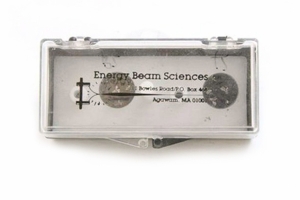
Coating a fly with a micron scale layer of gold may at first seem a strange thing to do. However, to the biological community this is the only way to obtain high resolution images from organic artefacts, with an electron microscope. Traditional optical microscopes have a limited ability to magnify an image because of the relatively large wavelength of light. Electrons have a much smaller wavelength making it possible to observe extraordinary detail. The fly is coated with gold so that when the electrons hit the fly, they are able to flow along a conductive path provided by the gold. Without this conductive path, the fly becomes more and more electrically charged and ends up repelling the electrons being fired at it, preventing an image being formed. Thus to image any non-conductive object in an electron microscope they need to be coated with a conductive film: gold and carbon are typically used.
Sample ID: 147
Add materials you find interesting to your own selections.
Use the  button to select a material and get started.
button to select a material and get started.



